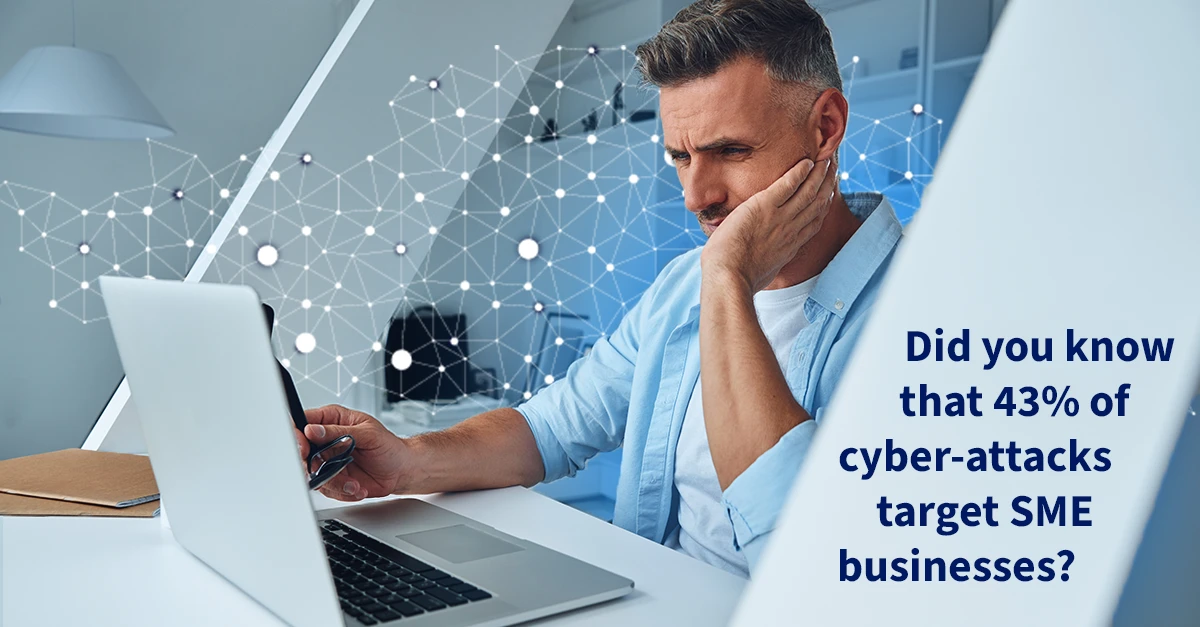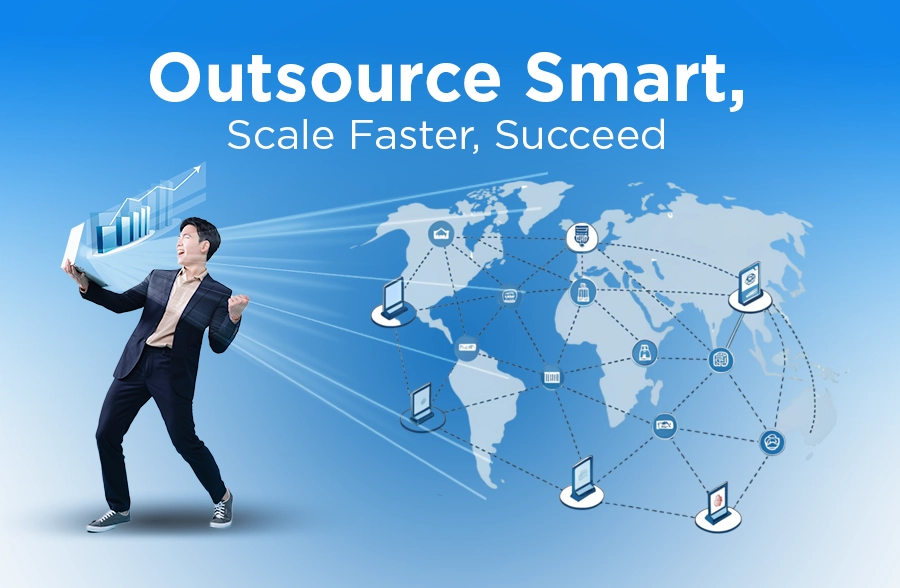Schedule a FREE call with our outsourcing expert now and get a precise quotation that meets your requirements. Don't wait - get started today!
Are you aware that 43% of cyber-attacks specifically target SMEs? Did you know that 60% of these SMEs that are cyber-attack victims end up going out of business within just six months? The pillars of cybersecurity are no longer just for big corporations—they’re essential for SMEs, too.
Your business data is invaluable. However, keeping it secure can be challenging, especially given constantly changing threats. Is there a cost-effective solution to protect your digital assets?
Investing in cybersecurity protects your business and enhances your reputation. Clients and partners are more likely to engage with a company that prioritizes their security. A strong cybersecurity strategy can bring peace of mind to your business operations.
It’s time to take control of your digital security. This guide will walk you through the core pillars of cybersecurity, tailored for SMEs like yours. Ready to protect your business and gain a competitive edge? Let’s dive in and build your cyber fortress together!
Understanding the Core Pillars of Cybersecurity
The pillars of cybersecurity are fundamental principles that guide organizations in protecting their digital infrastructure, data, and users from cyber threats. These pillars are crucial for SMEs as they provide a structured approach to managing cybersecurity risks and ensuring business continuity in an increasingly digital world.
The pillars of cybersecurity are interconnected, reinforcing the other to create a comprehensive security posture. By implementing all pillars, SMEs can create a multi-layered defense that addresses various aspects of cybersecurity, from risk management to incident response, effectively reducing the likelihood and impact of cyber attacks.
The Five Fundamental Pillars of Cybersecurity for SMEs
Knowledge is power. Understanding these five pillars will empower SMEs to build a strong cybersecurity strategy and protect their valuable digital assets.
Pillar 1: Risk Management and Assessment
Risk management is the core of any effective cybersecurity strategy. By identifying and evaluating potential threats, SMEs can prioritize their security efforts and allocate resources more efficiently.
- Identifying potential threats: It involves researching and cataloging the various types of cyber threats that could target your business. These may include malware, phishing attacks, insider threats, and emerging risks specific to your industry.
- Evaluating vulnerabilities: Once threats are identified, assess your systems, networks, and processes for weaknesses that could be exploited. This step helps you understand where your organization is most exposed to potential attacks.
- Implementing risk mitigation strategies: Based on the identified threats and vulnerabilities, develop and implement strategies to reduce risks. It may include upgrading software, improving security protocols, or investing in new security measures.
Pillar 2: Identity and Access Management (IAM)
IAM is crucial in preventing unauthorized access to your systems and data. It ensures that only the right people can access the right resources at the right times.
- User authentication methods: Implement strong authentication methods, such as multi-factor authentication (MFA), to verify user identities. It adds an extra layer of security beyond simple passwords.
- Role-based access control: Assign access rights based on employees’ roles and responsibilities. This principle of least privilege helps limit potential damage from compromised accounts or insider threats.
- Preventing unauthorized access: To keep your systems secure, regularly review and update access permissions, promptly revoke access for departing employees, and monitor suspicious login attempts.
Pillar 3: Data Protection and Privacy
Protecting sensitive information is crucial. This pillar focuses on safeguarding data throughout its lifecycle.
- Encryption techniques: Use strong encryption for data at rest and in transit. It ensures that even if data is intercepted or stolen, it remains unreadable to unauthorized parties.
- Data classification: Categorize your data based on sensitivity and importance. It allows you to apply appropriate security measures and focus resources on protecting critical information.
- Compliance with data protection regulations: Stay informed about and adhere to relevant laws and regulations. It helps avoid legal issues and establishes best practices for data handling.
Pillar 4: Network and Infrastructure Security
A secure network is the backbone of your digital operations. This pillar protects the pathways through which your data travels and is stored.
- Firewalls and intrusion detection systems: Deploy and maintain firewalls to filter network traffic and use intrusion detection systems to quickly identify and respond to potential security breaches.
- Secure network architecture: Design your network with security in mind, segmenting sensitive areas and implementing strong access controls between different parts of your infrastructure.
- Regular security updates and patches: Keep all systems and software up to date with the latest security patches. Unpatched vulnerabilities are a common entry point for cyber attacks.
Pillar 5: Incident Response and Business Continuity
Even with preventive, solid measures, breaches can still occur. This pillar prepares your organization to respond effectively to security incidents and maintain operations.
- Developing an incident response plan: Create a detailed plan outlining steps to take in case of a security breach. It should include roles and responsibilities, communication protocols, and procedures for containment and recovery.
- Training the security team: Ensure your security team is well-trained and regularly updated on the latest threats and response techniques. Regular drills help keep skills sharp and identify areas for improvement.
- Disaster recovery and business continuity strategies: Develop plans to maintain or quickly resume business operations during a significant security incident. These plans should include regular data backups, alternative processing facilities, and clear system restoration procedures.
Implementing the Pillars of Cybersecurity: Best Practices for SMEs
Implementing the pillars of cybersecurity requires dedication and ongoing effort. Here are some best practices to help SMEs strengthen their security posture.
Conducting Regular Security Assessments
Perform periodic security audits to identify vulnerabilities and assess the effectiveness of your current security measures. This proactive approach helps you stay ahead of potential threats.
Employee Training and Awareness Programs
Your employees are both your first line of defense and a potential vulnerability. Regular training on security best practices and the latest threats can significantly reduce the risk of human error leading to a data breach.
Investing in Robust Security Measures
Data security must always be a top priority for every business. While it may seem costly upfront, investing in quality security tools and measures can save your business from the potentially devastating costs of a cyber attack. Consider it an insurance policy for your digital assets.
Partnering with Cybersecurity Experts
For many SMEs, managing all aspects of cybersecurity in-house can be challenging. Partnering with cybersecurity experts can provide access to specialized knowledge and resources, helping you implement the pillars of cybersecurity more effectively.
Common Challenges in Implementing the Pillars of Cybersecurity
While the benefits of strong cybersecurity are clear, many SMEs need help in implementation. Understanding these challenges is the first step in overcoming them.
Budget Constraints
Many SMEs need help to allocate sufficient funds for comprehensive cybersecurity. However, viewing cybersecurity as an investment rather than an expense can help justify the costs.
Lack of In-house Expertise
The cybersecurity field is complex and rapidly evolving. SMEs often need help attracting and retaining skilled security professionals, making implementing all of its pillars challenging.
Balancing Security with User Experience
More relaxed security measures can hamper productivity and frustrate users. Finding the right balance between security and usability is crucial for successfully implementing your cyber security strategy.
Keeping Up with Evolving Threats
The threat landscape constantly changes, with new vulnerabilities and attack methods emerging regularly. Staying informed and adapting your security measures can be challenging but essential for maintaining strong protection.
The Role of Human Error in Cybersecurity
While technology plays a crucial role, the human element remains critical in cybersecurity. Understanding and addressing this aspect is vital for a comprehensive security approach.
Understanding the Impact of Human Error on Security
Human errors, such as falling for phishing scams or mishandling sensitive data, can bypass even the most sophisticated technical security measures. Recognizing this vulnerability is crucial for developing a holistic security strategy.
Strategies to Minimize Human-Related Risks
Implementing robust training programs, creating a culture of security awareness, and using technological safeguards can all help reduce the risk of human error leading to security breaches.
Developing a Comprehensive Cyber Security Strategy
A strong cybersecurity strategy ties together all the pillars of cybersecurity into a cohesive plan. Here’s how to approach this crucial task.
Aligning Security Goals with Business Objectives
Your cybersecurity strategy should support and enable your business goals, not hinder them. Ensure that security measures are designed with your company’s needs and operations in mind.
Creating a Roadmap for Implementation
Develop a phased approach to implementing the pillars of cybersecurity. It will allow you to prioritize the most critical areas while building towards comprehensive protection over time.
Continuous Improvement and Adaptation
Cybersecurity is not a one-time effort but an ongoing process. Review and update your strategy regularly to address new threats, technologies, and business changes.
Strengthening Your SME’s Cybersecurity Posture
We’ve explored the five pillars of cybersecurity: risk management, identity and access management, data protection, network security, and incident response. These form the backbone of a robust cyber defense strategy.
For SMEs, prioritizing cybersecurity isn’t just smart—it’s essential in today’s digital world. By focusing on these pillars, you’re taking a big step towards protecting your business from cyber threats.
But let’s face it—implementing all this can be daunting. That’s where Magellan Solutions comes in. We’re experts in helping SMEs like yours build strong cybersecurity defenses. Our team can guide you through each pillar, tailoring solutions to your needs and budget.
Ready to boost your cybersecurity? Don’t wait for a breach to happen. Contact Magellan Solutions today. Let’s work together to keep your business safe and thriving. Your security is our top priority!
















